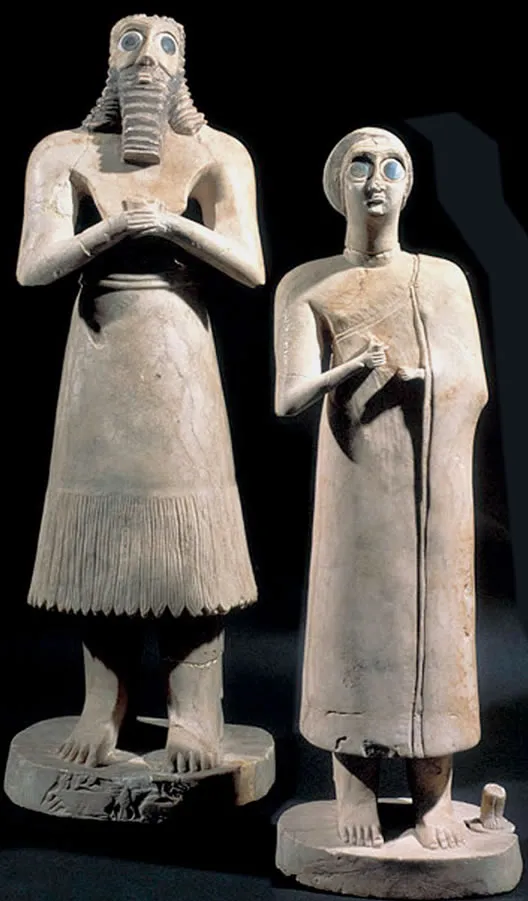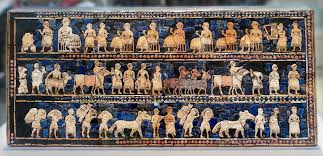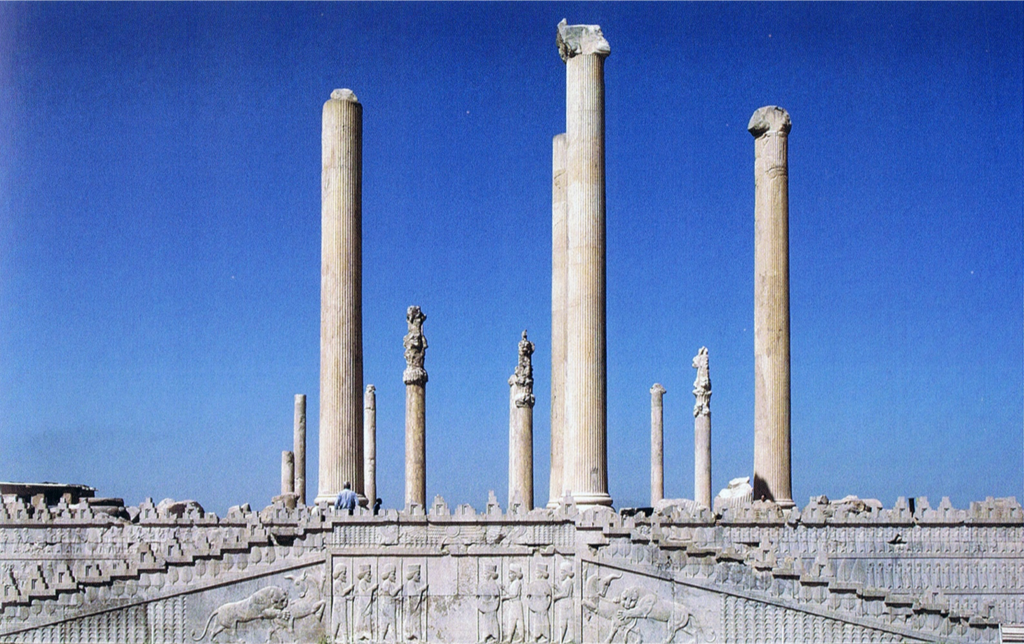Unit 2.1: Ancient Mesopotamia
1/5
There's no tags or description
Looks like no tags are added yet.
Name | Mastery | Learn | Test | Matching | Spaced |
|---|
No study sessions yet.
6 Terms

White Temple and its Ziggurat
Artist: N/A
Period/Movement: Sumerian
Medium: Mud Brick painted white — reflected the sun’s rays
Location: Modern Warka, Iraq
Significance: Raised to be closer to god, corners of the temple oriented toward the cardinal points, religious/political center, only important people could enter

Statues of Votive Figures, from the Square Temple at Eshnunna
Artist: N/A
Period/Movement: Sumerian
Medium: Gypsum inlaid with shell and black limestone
Location: Modern Tell Asmar, Iraq
Significance: exaggerated eyes (beholding the divine), elite male and female figures, a place of worship to the gods

Standard of Ur
Artist: N/A
Period/Movement: Sumerian
Medium: Wood inlaid with shell, lapis lazuli, and red limestone
Location: modern Tell el-Muqavyar, Iraq
Significance: Registers, hierarchical scale, mosaic, 2-sided: war—Sumerian king descending from his chariot to inspect captives, and peace— food brought to a banquet, ruler wears a kilt of wool

The Code of Hammurabi
Artist: N/A
Period/Movement: Babylon
Medium: Basalt
Location: modern Iran
Significance: Hierarchical scale, stele, cuneiform says: “eye-for-eye,” divine laws carved in stone, sun god: Shamash giving laws to Hammurabi to be king

Lamassu from the Citadel of Sargon ||
Artist: N/A
Period/Movement: Neo-Assyrian
Medium: Alabaster
Location: modern Khrosabad, Iran
Significance: composite creature, human head: intelligence, body of bull: strength, guardian figures for private areas, always in pairs, god-like

Audience Hall (apadana) of Darius and Xerxes
Artist: N/A
Period/Movement: Persian
Medium: Cut Sandstone and Mud Brick
Location: Persepolis, Iran
Significance: hypostyle hall, Darius and Xerxes were father and son, relief sculptures were to show the diversity of the Persian empire, bull-headed columns (strength), used to hold thousands of people, destroyed by Alexander the Great